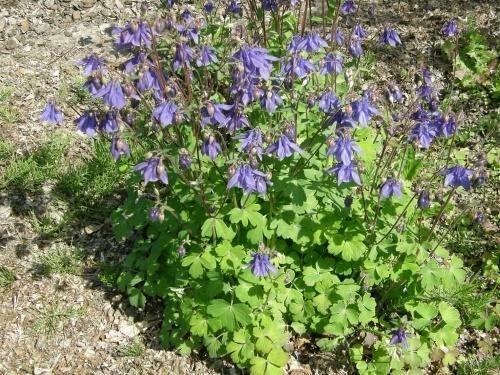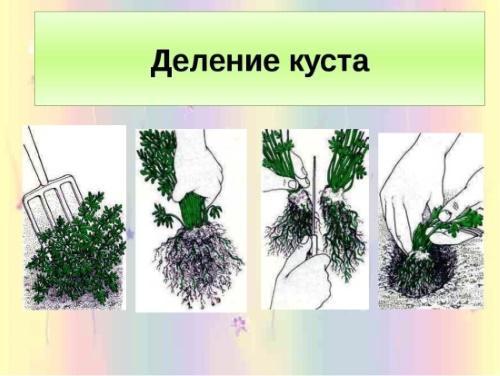Features of aquilegia transplant
 The charming aquilegia bells look simple and elegant at the same time. This amazing plant from the buttercup family is one of the unpretentious perennials that adorn their flower beds with flowering for many years. However, even without inflorescences, the bush itself with its lush crown and carved leaves also has a beautiful decorative appearance.
The charming aquilegia bells look simple and elegant at the same time. This amazing plant from the buttercup family is one of the unpretentious perennials that adorn their flower beds with flowering for many years. However, even without inflorescences, the bush itself with its lush crown and carved leaves also has a beautiful decorative appearance.
The thin stems of aquilegia have a solid base: the root system of the bush is very powerful and is a long rod that goes deep into the ground (up to 70 cm). Over time, it grows overgrown with many small and fragile roots, in connection with which flower growers often have problems with plant transplantation. When is it better to transplant aquilegia and how to do it correctly so as not to damage the roots?
Transplanting old bushes
To transplant an adult aquilegia, or to plant a bush, dividing it into parts, should be until the moment when it reaches the age of three. In this case, the chances of digging out a deep root-rod without damaging it are still there, although they are very small. This should be done in early spring, deeply digging the bush from all sides (but not under the leaves themselves), carefully removing it and dividing it into parts. Each section should have live stems with buds.
It is better not to disturb Aquilegia over five years with a transplant - it may not tolerate it.
You can rejuvenate a very old plant (from 5 to 10 years) in another way, bypassing the transplant process. To do this, in spring, they begin to actively fertilize the bush in order to stimulate the formation of young basal rosettes. They will replace the old aquilegia when they grow up and can simply be removed. Also, the flower reproduces well by self-sowing, if you leave the seeds and let them fall to the ground. As the seedlings develop, the old plant is also dug up.
Transplanting seedlings
The long root begins to form in the aquilegia at the seedling stage, leaving an imprint on the further cultivation of the flower. Even young seedlings do not tolerate transplanting well, which must be taken into account when growing them.
Seeds on seedlings it is recommended to sow in the fall directly into the open ground or in a container, which is then buried in the garden for the winter (autumn crops germinate better). And next spring, the seedlings can be planted after they form two true leaves. It makes no sense to keep them longer, otherwise the root-stem will outgrow and the transplant will end with the death of the seedlings.
Aquilegia seedlings must be transplanted immediately to a permanent place, on a flower bed.
Transplanting rooted cuttings
For the preservation of varietal traits, the method of propagation of aquilegia by green cuttings is often used. They are broken off from the mother bush in the spring and rooted in a container with a nutrient substrate. By autumn, the stalk is a fully formed young bush. On the flowerbed, it is transplanted only with the arrival of spring.